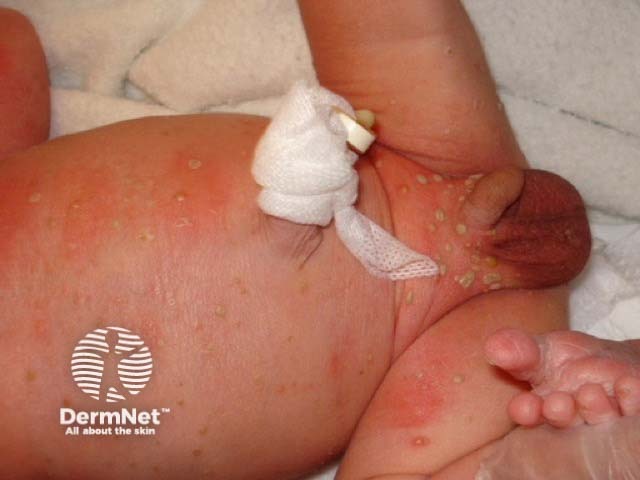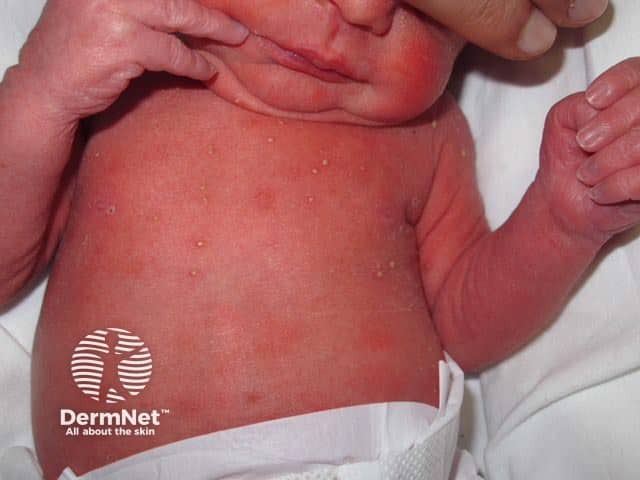Main menu
Common skin conditions

NEWS
Join DermNet PRO
Read more
Quick links
Author: Dr Diana Norris, Dermatology Registrar, Skin and Cancer Foundation Victoria, Carlton, VIC, Australia. DermNet New Zealand Editor in Chief: Adjunct A/Prof Amanda Oakley, Dermatologist, Hamilton, New Zealand. Copy edited by Gus Mitchell/Maria McGivern. February 2018.
Introduction
Demographics
Causes
Clinical features
Diagnosis
Differential diagnoses
Treatment
Transient neonatal pustular melanosis is an uncommon benign pustular condition presenting in newborn infants [1]. It is also known as transient neonatal pustular dermatosis and transient neonatal pustulosis.

Neonatal pustular melanosis

Neonatal pustular melanosis

Transient neonatal pustular melanosis
Transient neonatal pustular melanosis affects 0.2–4% of newborn infants in the first few days of life [2]. It is more common in African American babies than white American babies, affecting 4.4% of African American [3].
The cause of transient neonatal pustular melanosis is unknown. Some authors have suggested it may be a variant of toxic erythema of the newborn [4].
The key clinical feature of transient neonatal pustular melanosis is the presence of pustules. These occur on an unaffected, non-erythematous base [1].
The diagnosis of transient neonatal pustular melanosis is clinical. No investigations are required.
A skin biopsy shows a neutrophilic infiltrate in the epidermis or dermis, commonly with subcorneal pustules, and occasional eosinophils [2,5]. Pustules contain neutrophils with no organisms [1].
The differential diagnosis for transient neonatal pustular melanosis includes:
No treatment is necessary for transient neonatal pustular melanosis, as it is self-resolving and has no long-term complications [5,6].
Ferrándiz
C, Coroleu LW, Ribera M, Lorenzo JC, Natal A. Sterile transient neonatal pustulosis is a precocious form of erythema toxicum neonatorum. Dermatology 1992; 185: 18–22. DOI: 10.1159/000247396. PubMed.